Caffeine Content in Excedrin Migraine: The Essential Guide
How much caffeine is in Excedrin Migraine? Get the facts about the caffeine content and how it can affect migraine relief. Discover the recommended dosage, side effects, and more.
Understanding Caffeine Content in Excedrin Migraine
Excedrin Migraine is a popular over-the-counter (OTC) medication used to alleviate the symptoms of moderate to severe migraines. The key active ingredients in Excedrin Migraine are acetaminophen, aspirin, and caffeine.
Each tablet of Excedrin Migraine contains 65 milligrams (mg) of caffeine, along with 250 mg of acetaminophen and 250 mg of aspirin. The recommended adult dose is two tablets, which equates to 130 mg of caffeine, roughly the same amount as found in an 8-12 ounce cup of coffee.
The Role of Caffeine in Migraine Relief
Caffeine has been shown to enhance the effects of pain relievers like acetaminophen and aspirin, making them more effective in alleviating migraine symptoms. It can also help constrict blood vessels, which can alleviate the throbbing and pulsing associated with migraines.
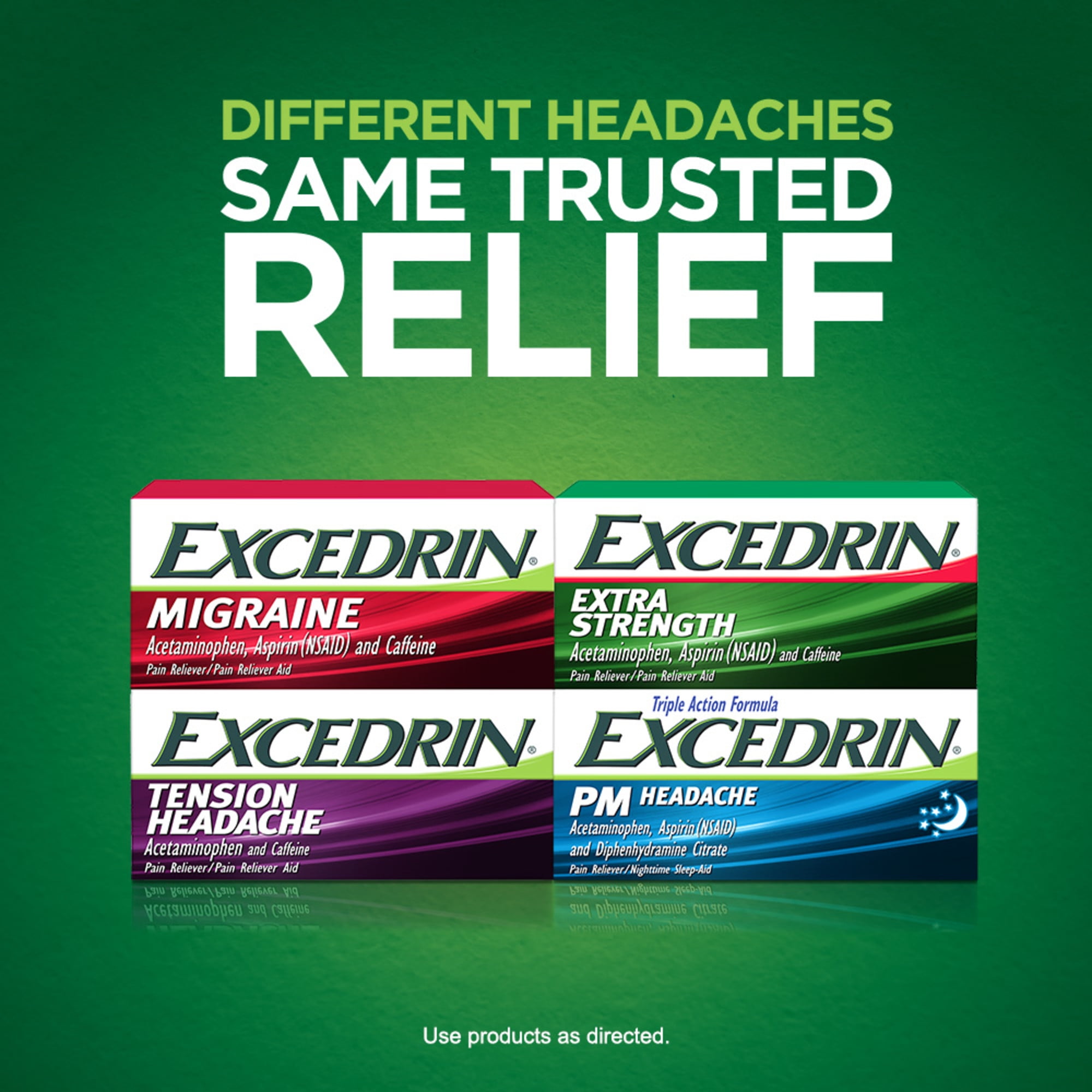
However, it’s important to note that for some individuals, caffeine can actually trigger a migraine headache. Therefore, it’s essential to monitor your body’s response and limit your use of caffeine-containing medications, foods, or beverages while using Excedrin Migraine.
Effectiveness of Excedrin Migraine
In clinical studies, the combination of acetaminophen, aspirin, and caffeine in Excedrin Migraine has been shown to be effective in reducing migraine pain intensity. Results from three double-blind, randomized, and placebo-controlled studies with 1,220 participants revealed that:
- Over 59% of those taking Excedrin Migraine experienced a reduction in migraine pain to mild or none within 2 hours, compared to only 33% of the placebo group.
- At the 6-hour mark, 79% of the Excedrin Migraine group had pain reduced to mild or none, compared to 52% in the placebo group.
- 51% of the Excedrin Migraine group were pain-free, compared to 24% in the placebo group.
The study also found that Excedrin Migraine helped to improve other migraine symptoms, such as nausea, photophobia (light sensitivity), and phonophobia (sound sensitivity).

Dosage and Safety Considerations
The recommended adult dosage for Excedrin Migraine is two tablets, taken with a glass of water. It’s important not to exceed this dose within a 24-hour period, unless directed by a healthcare provider.
Excedrin Migraine is associated with various warnings and potential side effects, some of which may be severe. These include the risk of Reye’s syndrome, allergy, liver toxicity, stomach bleeding, headache rebound due to medication overuse, and caffeine overuse. It’s crucial to review the full safety information and discuss any concerns with your doctor.
Comparing Caffeine Content Across Excedrin Products
While Excedrin Migraine contains 65 mg of caffeine per tablet, other Excedrin products may have different caffeine levels. For example:
- Excedrin Extra Strength: 65 mg of caffeine per tablet
- Excedrin Tension Headache: 65 mg of caffeine per tablet
- Excedrin Menstrual Complete: 65 mg of caffeine per tablet
It’s important to be aware of the caffeine content in any Excedrin product you intend to use, as excessive caffeine consumption can lead to undesirable side effects.
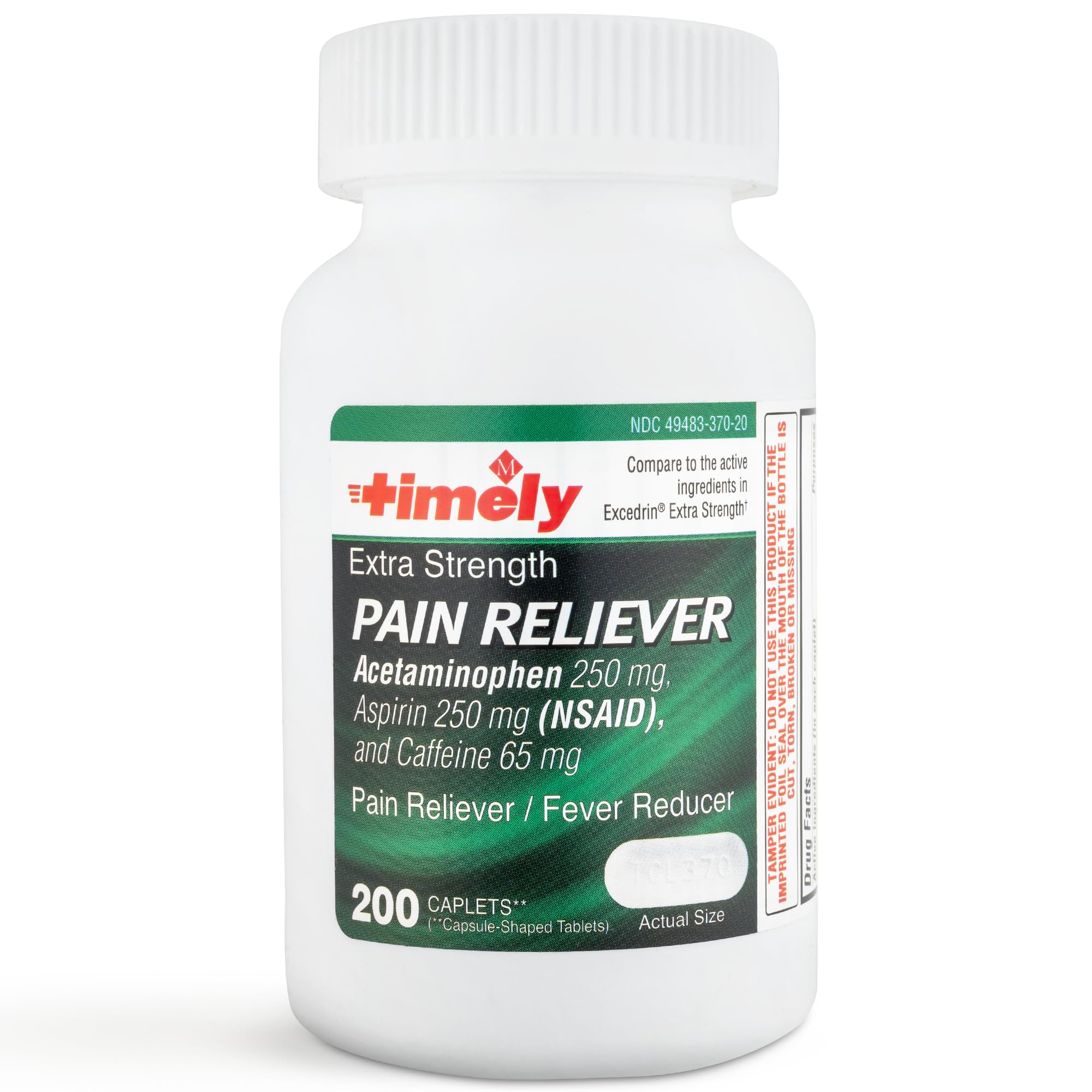
Frequently Asked Questions
How long do caffeine withdrawal headaches last?
Caffeine withdrawal headaches can last anywhere from a few hours to several days, depending on the individual’s caffeine consumption habits and sensitivity. The duration and severity of the headaches can be reduced by gradually reducing caffeine intake rather than stopping abruptly.
Does caffeine help with migraines?
Yes, caffeine can help with migraines when combined with pain relievers like acetaminophen and aspirin, as it can enhance the effectiveness of these medications. However, for some individuals, caffeine can also trigger or worsen migraine symptoms.
What OTC medications are good for headaches?
In addition to Excedrin Migraine, other over-the-counter medications that can be effective for headache relief include ibuprofen (Advil, Motrin), naproxen (Aleve), and acetaminophen (Tylenol). It’s important to follow dosage instructions and consult with a healthcare provider if headaches persist or worsen.
How much caffeine is in Excedrin Migraine?
Medically reviewed by Leigh Ann Anderson, PharmD. Last updated on Nov 15, 2022.
Each tablet of Excedrin Migraine contains 65 milligrams (mg) of caffeine, 250 mg of acetaminophen, and 250 mg of aspirin. A regular adult dose (2 tablets) contains 130 mg of caffeine, roughly equal to an 8-12 ounce cup of coffee.
How to take Excedrin Migraine
- The regular dosage for adults is 2 tablets with a glass of water.
- Do not take more than two tablets in any 24-hour period, unless directed by a doctor.
- If symptoms worsen or persist, contact your doctor. If you are under 18 years of age, ask a doctor before use.
Excedrin Migraine is an over-the-counter (OTC) medicine approved by the FDA for the relief of migraine pain. In clinical studies, patients with moderate to severe migraines experienced relief with one dose. It can work as quickly as 30 minutes in some people.
The recommended dose of Excedrin Migraine (2 tablets) contains 130 mg of caffeine, which is roughly as much caffeine as found in an 8 ounce cup of coffee. Limit your use of caffeine-containing medications, foods, or beverages while using Excedrin Migraine. Excessive caffeine can cause nervousness, irritability, sleeplessness, and rapid heart beat.
Limit your use of caffeine-containing medications, foods, or beverages while using Excedrin Migraine. Excessive caffeine can cause nervousness, irritability, sleeplessness, and rapid heart beat.
Caffeine has been shown to increase the effects of pain relievers like aspirin and acetaminophen and help to make these medicines more effective in migraine. For some patients, caffeine can trigger a migraine headache, but it has also been shown to be helpful when combined with acetaminophen and aspirin.
How well does Excedrin Migraine work?
In three double-blind, randomized, and placebo-controlled studies with 1220 participants, researchers assessed the effectiveness of the OTC combination of acetaminophen, aspirin, and caffeine in alleviating moderate-to-severe migraine headache pain.
Participants took 2 tablets of the OTC acetaminophen, aspirin, and caffeine or a placebo as a one-time dose for treatment of one migraine attack.
Results showed a significantly greater reduction in migraine pain intensity 1 to 6 hours after the OTC acetaminophen, aspirin, and caffeine dose than placebo in all three studies.
- Pain was reduced to mild or none 2 hours after the dose in over 59% of those taking acetaminophen, aspirin, and caffeine compared to about 33% of placebo-treated patients.
- At 6 hours after the dose, 79% receiving acetaminophen, aspirin, and caffeine had pain reduced to mild or none vs. 52% in the placebo group, and 51% of the drug-treated patients were pain free (with 24% pain-free in the placebo group).
- Symptoms of nausea, photophobia (light sensitivity with pain), phonophobia (sound sensitivity with pain) and functional disability were improved 2 to 6 hours after treatment.
Excedrin Migraine is associated with warnings and side effects, some of which may be severe.
These include:
- Reye’s Syndrome
- risk of allergy
- liver toxicity
- stomach bleeding
- headache rebound due to medication overuse
- caffeine overuse
Review side effects and warnings here (in more detail)
Bottom Line
- Each tablet of Excedrin Migraine contains 65 milligrams (mg) of caffeine, 250 mg of acetaminophen, and 250 mg of aspirin.

- The dosage for adults is 2 tablets with a glass of water. Do not take more than two tablets or geltabs in any 24-hour period, unless directed by a doctor.
- People under 18 years of age should ask a doctor before use.
This is not all the information you need to know about Excedrin Migraine for safe and effective use. Review the full Excedrin Migraine information here, and discuss this information and any questions you have with your doctor or other health care provider.
References
- Lipton RB, et al. Efficacy and Safety of Acetaminophen, Aspirin, and Caffeine in Alleviating Migraine Headache Pain Three Double-blind, Randomized, Placebo-Controlled Trials. Arch Neurol. 1998; 55:210-217. doi:10.1001/archneur.55.2.210
- Excedrin Migraine (label information). DailyMed. US National Library of Medicine. https://dailymed.nlm.nih.gov/dailymed/drugInfo.cfm?setid=7ed841fb-a61c-4868-b4e5-4f2311a5e79c&audience=consumer
- Excedrin Migraine Medication.
 Excedrin.com. https://www.excedrin.com/products/migraine/
Excedrin.com. https://www.excedrin.com/products/migraine/ - Excedrin migraine (monograph). Drugs.com. https://www.drugs.com/excedrin-migraine.html
Related medical questions
- How long do caffeine withdrawal headaches last?
- Does caffeine cause high blood pressure?
- Does coffee help with asthma?
- Does caffeine affect Vraylar (cariprazine)?
- Does Maxalt have caffeine in it?
- Does caffeine help migraines?
- Which OTC medications are good for headaches?
- Can you take Excedrin Migraine while pregnant?
- How long does it take for Excedrin Migraine to work?
- Staying Safe while taking Acetaminophen
- Can you take ibuprofen with Excedrin Migraine?
Drug information
- Caffeine
- Excedrin
- Excedrin Migraine
Related support groups
- Caffeine
(42 questions, 73 members) - Excedrin
(24 questions, 45 members) - Excedrin Migraine
(15 questions, 17 members) - Migraine
(266 questions, 1,609 members)
Medical Disclaimer
Excedrin Ingredients and Dosage Information
Learn more about the pain-fighting ingredients in Excedrin® pain relief products, as well as Head Care* ingredients and suggested use.
INGREDIENTS & DOSAGE GUIDELINES
Select one to see the ingredients and dosage guidelines. All Excedrin products should be taken with a full glass of water.
Excedrin Headache & Migraine Relief: Ingredients & Dosage Guidelines
Aspirin
Acetaminophen
Caffeine
Has been a go-to for all types of pain for decades, including headache and migraines.
Is a powerful ingredient for pain relief, and is tough when fighting headaches.
Enhances pain-relieving function of aspirin and acetaminophen.
Use only as directed. Read all warnings and product information prior to use. Always follow label directions
Head Care Proactive Health Ingredients & Supplement Facts*
Magnesium
Riboflavin
Vitamin B6, Folic Acid, Vitamin B12
Essential nutrient that helps support blood flow in the brain for head comfort.

Read all warnings and product information prior to use. Always follow label directions.
HOW THE ACTIVE INGREDIENTS IN EXCEDRIN HEADACHE & MIGRAINE RELIEF WORK TOGETHER TO STOP HEADACHES
Evidence suggests that the use of combination analgesics such as Excedrin offer advantages in the treatment of headaches by targeting pain in more than one way.[3]
Excedrin’s specialized formula contains two pain relievers (acetaminophen and aspirin) plus an amplifier (caffeine) that work together to target head pain. Aspirin is a non-steroidal anti-inflammatory drug or NSAID. Aspirin helps to block the production of pain signaling chemicals called prostaglandins. The way in which acetaminophen works is still not well understood. However, it is believed to elevate the pain threshold. This allows you to tolerate more pain, therefore providing pain relief. Finally, caffeine has been shown to increase the potency of aspirin and acetaminophen by up to 40 percent. This means less acetaminophen and aspirin is needed to relieve your migraine pain when combined with caffeine.[3,4,5]
This means less acetaminophen and aspirin is needed to relieve your migraine pain when combined with caffeine.[3,4,5]
Acetaminophen, aspirin and caffeine, when taken as directed, provide clinically proven headache relief. Excedrin is a combination of these ingredients: two pain relievers, plus an amplifier to enhance the analgesic effect.
Acetaminophen, also known as paracetamol, should not be taken with other medicines that also contain acetaminophen. Acetaminophen is contained in many medicines to treat pain, fever, symptoms of cold and flu, and sleep medicines. Do not take more than recommended dose, as this may be harmful, including serious harm to your liver. If you have liver or kidney disease, talk to your doctor before taking acetaminophen.
EXTRA STRENGTH
MIGRAINE
TENSION HEADACHE
PM HEADACHE
Contains Acetaminophen
(250 mg per tablet)
(250 mg per tablet)
(500 mg per tablet)
(250 mg per tablet)
Contains Aspirin
(250 mg per tablet)
(250 mg per tablet)
(250 mg per tablet)
Contains Caffeine
(65 mg per tablet)
(65 mg per tablet)
(65 mg per tablet)
Contains Diphenhydramine (Sleep Aid)
(38 mg per tablet)
12 Years & Older
18 Years & Older
12 Years & Older
12 Years & Older
2 Every 6 Hours
(Max.
Contains Electrolytes
Contains Caffeine
Contains Melatonin
18 Years or Older
18 Years or Older
18 Years or Older
Frequency
1 tablet per day
Limit 2 packets per day
Limit 1 packet per day
Available in Tablets
Available as a Powder
CAFFEINE: A KEY INGREDIENT TO THE EXCEDRIN LIST
You may have heard that caffeine can cause or exacerbate headaches, and if so, you’re probably wondering why there’s caffeine in most Excedrin pain relief products.
It’s true that caffeine can be a headache trigger in certain situations, but that’s far from the full story.
Caffeine is referred to as an ‘analgesic adjuvant’. This means that it helps to boost the effects of certain pain relievers. In the case of Excedrin pain relief products, caffeine boosts the pain-relieving effects of aspirin and acetaminophen – making these medicines up to 40% more effective.
That’s why you’ll find caffeine in almost all Excedrin pain relief products.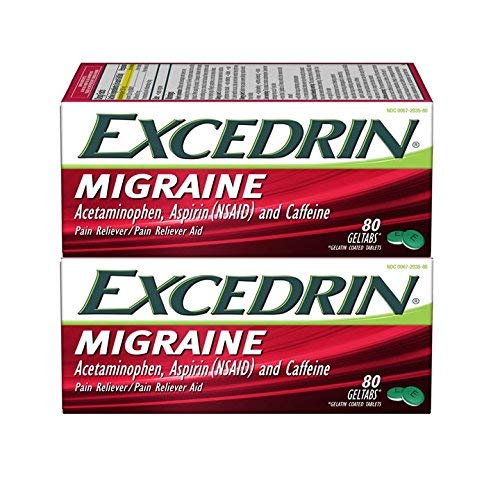 As compared to falling asleep without melatonin. Melatonin helps you fall asleep and is for occasional sleepiness.* †Magnesium helps support proper blood flow to the brain.*
As compared to falling asleep without melatonin. Melatonin helps you fall asleep and is for occasional sleepiness.* †Magnesium helps support proper blood flow to the brain.*
FIND THE EXCEDRIN PRODUCT THAT’S RIGHT FOR YOU
Excedrin has been a leader in headache relief for more than 50 years, and the range of Excedrin products contains something for every kind of headache, including tension headaches, nighttime headaches and migraines.
Discover the full Excedrin product range here, or, if you need more help finding the right product for you, try our interactive product selector.
Sources:
- American Migraine Foundation. Understanding Caffeine Headaches. https://americanmigrainefoundation.org/resource-library/understanding-caffeine-headaches/. Accessed November 27, 2019. Referenced text is highlighted in source PDF.
- Caffeine in the management of patients with headache. NCBI. https://www.ncbi.nlm.nih.gov/pmc/articles/PMC5655397/.
 Accessed 10/12/19.WebMD. The Link Between Caffeine and Headac
Accessed 10/12/19.WebMD. The Link Between Caffeine and Headac - Combined analgesics in (headache) pain therapy: shotgun approach or precise multi-target therapeutics?. Straube et al. BMC Neurologly. https://bmcneurol.biomedcentral.com/articles/10.1186/1471-2377-11-43. Accessed 20/03/20
- How Do Pain Relievers Work? Johns Hopkins Medicine. https://www.hopkinsallchildrens.org/Patients-Families/Health-Library/HealthDocNew/How-Do-Pain-Relievers-Work. Accessed 31/03/20.
- Aspirin and Migraine. National Headache Foundation. https://headaches.org/2007/10/25/aspirin-and-migraine/. Accessed 31/03/20.
EXCEDRIN® MEANS FAST
Trusted products tough enough for different types of headaches.
SEE ALL PRODUCTS
$1 OFF EXCEDRIN
GET COUPONS
GET ANSWERS TO YOUR FREQUENTLY ASKED QUESTIONS
Excedrin® is a leading expert in headache education.
Headache pills
Types
Conventionally, all headache pills are divided into three types: simple analgesics (paracitamol, ibuprofen), ternary (a combination of three main components: ASA + phenacetin + caffeine), quintuplets (represented by the formula: 2 analgesics + codeine + sleeping pills phenobarbital + caffeine).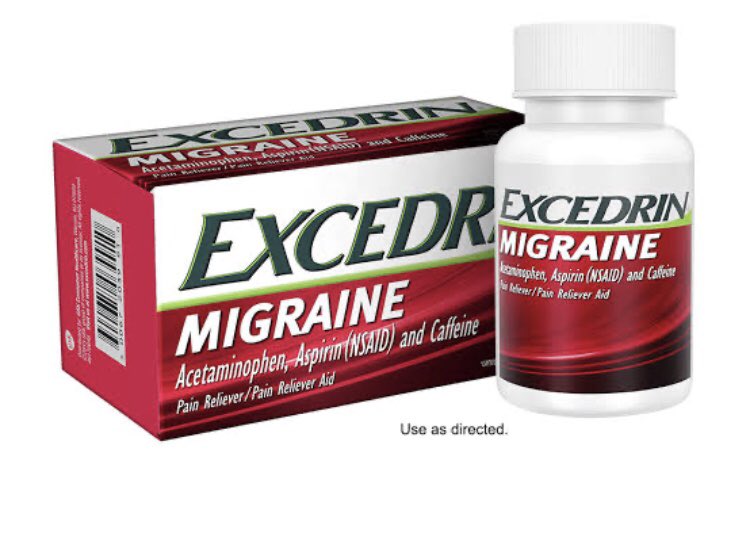
Depending on the formula of manufacture, all headache preparations can be classified into:
- Simple analgesics. The composition of such drugs includes only one active ingredient – analgin. Also, the basis of the drug can be paracetamol, acetylsalicylic acid or ibuprofen. These drugs are sold without a prescription. The paracytamol group includes: Paracetamol, Efferalgan, Panadol, Kalpol, Strimol, Flutabs, Daleron. To ibuprofens: Ibuprofen, Brufen, Nurofen, Solpaflex, MIG, Faspik, Advil, Bonifen, Pedea, Deblok, Ibalgin.
- Triads. The drugs in this group contain caffeine and two analgesics (usually phenacetin and ASA). The main thing here is caffeine, which can enhance and prolong the analgesic effect. Interestingly, this group also includes “twos” – those that contain only one analgesic. Among the common “triad” medicines, there are: Citramon P, Excedrin, Citrapar, Cofitsil-Plus, Aquacitramon, Citrapak. All of them are created according to a formula that combines caffeine, ASA and paracetamol, while drugs such as Caffetin SK, Novalgin, Gevadal, Saridon, Flucomp Extratab are based on propyphenazone, caffeine and paracetamol.

- Pyaterchatka – medicines based on the combination of 5 components: 2 analgesics, sleeping pills phenobarbital, codeine and caffeine. Codeine has an analgesic effect, enhancing the effect. Sleeping pills and caffeine also have an intensifying effect. The most popular types of such drugs are Sedalgin-Neo, Pentalgin-ICN, Sedal-M.
What symptoms should be used
Headache can be of different nature. The most common type is migraine. A migraine is a severe, prolonged headache that can last from 3-4 hours to several days. The head can hurt on one or both sides, mainly localized in the frontal part and in the temporal. The pain is characterized by throbbing, may be accompanied by vomiting, nausea, increased by bright light or noise.
Another type of pain is tension pain. It is formed due to a long stay of a person in one position, as well as during emotional stress, it can be caused by fatigue. Such pains are not characterized by intensity, as a rule, they are dull and aching.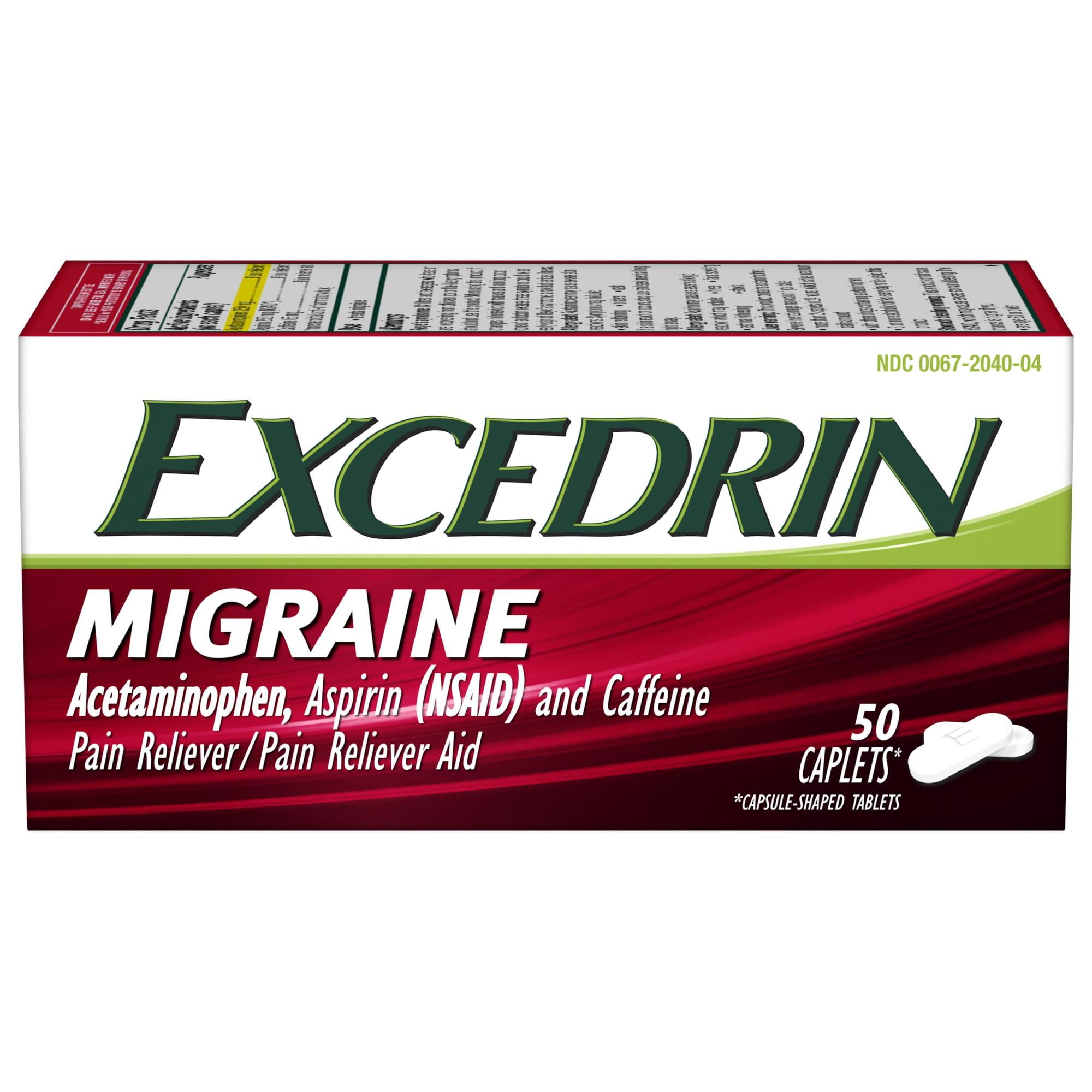 There will be a feeling of tightness in the head. The duration of such discomfort is from 30 minutes to a couple of hours.
There will be a feeling of tightness in the head. The duration of such discomfort is from 30 minutes to a couple of hours.
Another type of headache is vascular headache. It occurs with hypotension or hypertension. To treat such an ailment, drugs should be used to increase (in case of hypotension) or lower (in case of hypertension) blood pressure. You can take such medicines only after being prescribed by your doctor. Analgesics usually provide significant relief.
Therapeutic effect
There are several main headache medicines that have certain effects on the body. For example:
- Analgin – eliminates migraines, relieves spasms that were triggered by various inflammatory processes. Permissible daily intake: 1 tablet 2 or 3 times a day.
- Solpadeine is one of the newest drugs based on paracytamol, caffeine and codeine phosphate. Not only relieves headaches, but also acts as an anti-inflammatory and antiviral medicine.
- Tempalgin is an analogue of analgin, which includes tempidone.
 It relieves not only headaches, but also toothache. Apply 1 tablet no more than 3 times a day.
It relieves not only headaches, but also toothache. Apply 1 tablet no more than 3 times a day. - Pentalgin – may contain anaglin, caffeine, amidopyrone. Promotes the normalization of sleep and is characterized by a sedative effect.
- Citramon is one of the most common drugs for this disease. It contains caffeine, citric acid. The use is possible on 1-2 tablets 2-3 times a day.
Contraindications
Headache tablets are contraindicated in case of any allergic reactions to the components contained in them, with open or closed bleeding (except menstrual), in case of stomach ulcers, exacerbations of intestinal diseases, during pregnancy (only with permission doctor), with defects in the kidneys and liver, with diseases of the cardiovascular system.
Excedrin MigraStop, tabletki powlekane, 20 szt.
Preparation Excedrin MigraStop is for use in the combined treatment of headache and migraine attacks (symptoms such as: headache, nausea, hypersensitivity to light and sound, and disturbance of daily work) with or without aura.
Composition
Substances, additives drug: acetylsalicylic acid, paracetamol and caffeine.
Each coated tablet contains acetylsalicylic acid 250 mg, paracetamoiu 250 mg and caffeine 65 mg.
Other ingredients of the preparation:
tablet core: niskopodsta-wiona hydroxypropyl cellulose, microcrystalline cellulose, stearic acid,
shell: Opadry YS-1 -7086 (hy promeloza 3 cP, hypromeloza 6 cP, hypromeloza 50 cP, titanium dwutJenekiEIJI), propylene glycol), benzoic acid (E210), carnauba wax.
Dosage
Excedrin MigraStop should be used as directed in the leaflet or as directed by your doctor or pharmacist. If in doubt, contact your doctor or pharmacist.
Adults (over 18 years old):
Headache treatment
In the event of a headache, take 1 tablet with a full glass of water.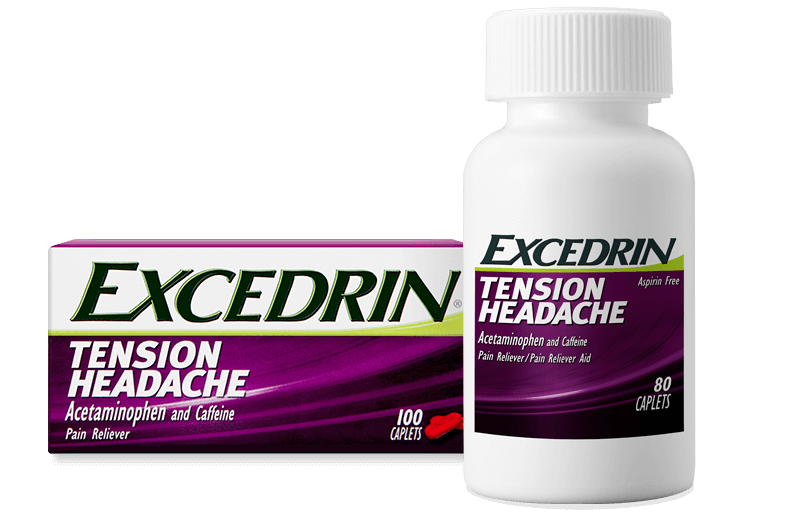 If necessary, the next tablet can be taken 4-6 hours after taking the first.
If necessary, the next tablet can be taken 4-6 hours after taking the first.
In case of more intense headache, 2 tablets can be taken at the same time, if necessary, 2 more tablets can be taken 4-6 hours after taking the first 2 tablets.
Excedrin MiaraStop should not be used for headaches for more than 4 days without consulting a doctor.
Treatment of migraine
If symptoms of migraine or migrenowej aura occur, take 2 tablets with a glass of water.
If necessary, you can take 2 more tablets with a 4-6 hour interval between doses.
Do not use Excedrin MigraStop for longer than 3 days in migraine without consulting a doctor.
Action
Acetylsalicylic acid and paracetamol reduce pain and fever, while acetylsalicylic acid also has an anti-inflammatory effect.
Caffeine is a mild stimulant and enhances the effects of acetylsalicylic acid and paracetamol.
Indications
Excedrin MigraStop is used in the combined treatment of headache and migraine attacks (symptoms such as: headache, nausea, hypersensitivity to light and sound, and disturbance of daily work) with or without aura.
Contraindications
When not to use the drug Excedrin MigraStop
Side effects
Like all medicines, Excedrin MigraStop can cause side effects, although not everybody gets them.
Common (occurs in 1 in 10 patients)
Uncommon (occurs in 1 in 100 patients)
Rare (occurs in 1 in 1000 patients)
Warnings and Precautions 90 056
Other applications medicines
Tell your doctor about all recent medications, even over-the-counter medications.
In particular, tell your doctor if you are taking any of the following drugs:
Taking the drug with food and drink
more alcoholic drinks per day.
Caffeine: caffeine Content in the recommended daily dose of the drug corresponds to the content of about one cup of coffee. During the use of the drug, you should limit the intake of drugs, food or drinks containing caffeine, since too much of it can cause nervousness, irritability, insomnia, and in some cases an increase in heart rate.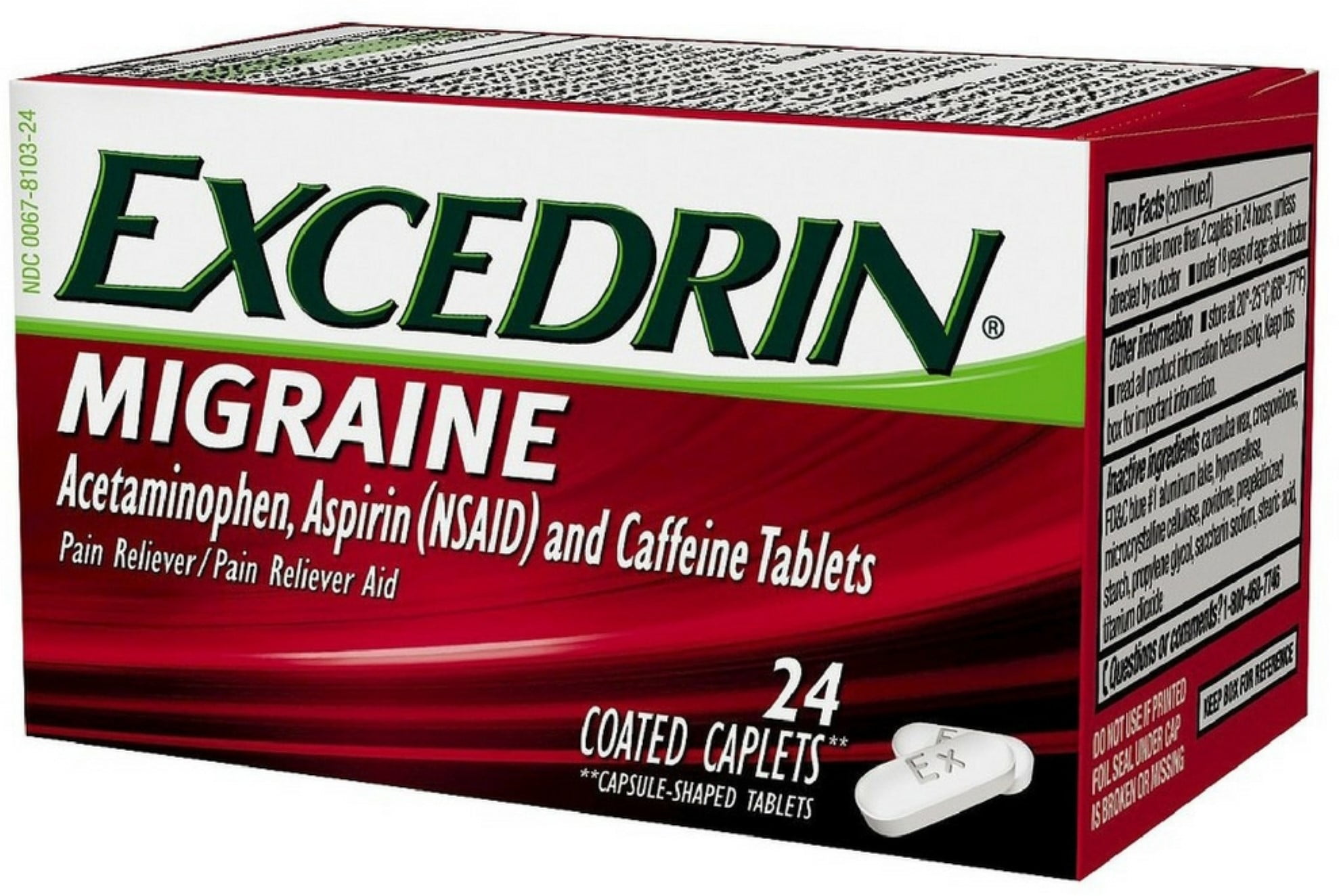
Pregnancy and breast-feeding
If you are pregnant or breast-feeding, consult your doctor before use.
Do not use Excedrin MigraStop during the last three months of pregnancy, due to the possibility of fetal injury or difficulty during delivery.
Do not use the drug while breastfeeding as it may be dangerous for the baby.
Effects on laboratory tests
Excedrin MigraStop belongs to a group of non-steroidal anti-inflammatory drugs (NSAIDs) that can impair fertility. This effect disappears after the discontinuation of the use of drugs from the NSAID group.
Use in children and adolescents
Excedrin MigraStop should not be used in children and adolescents under 18 years of age.
Driving and using machines
If you experience dizziness or drowsiness, do not drive or use machines.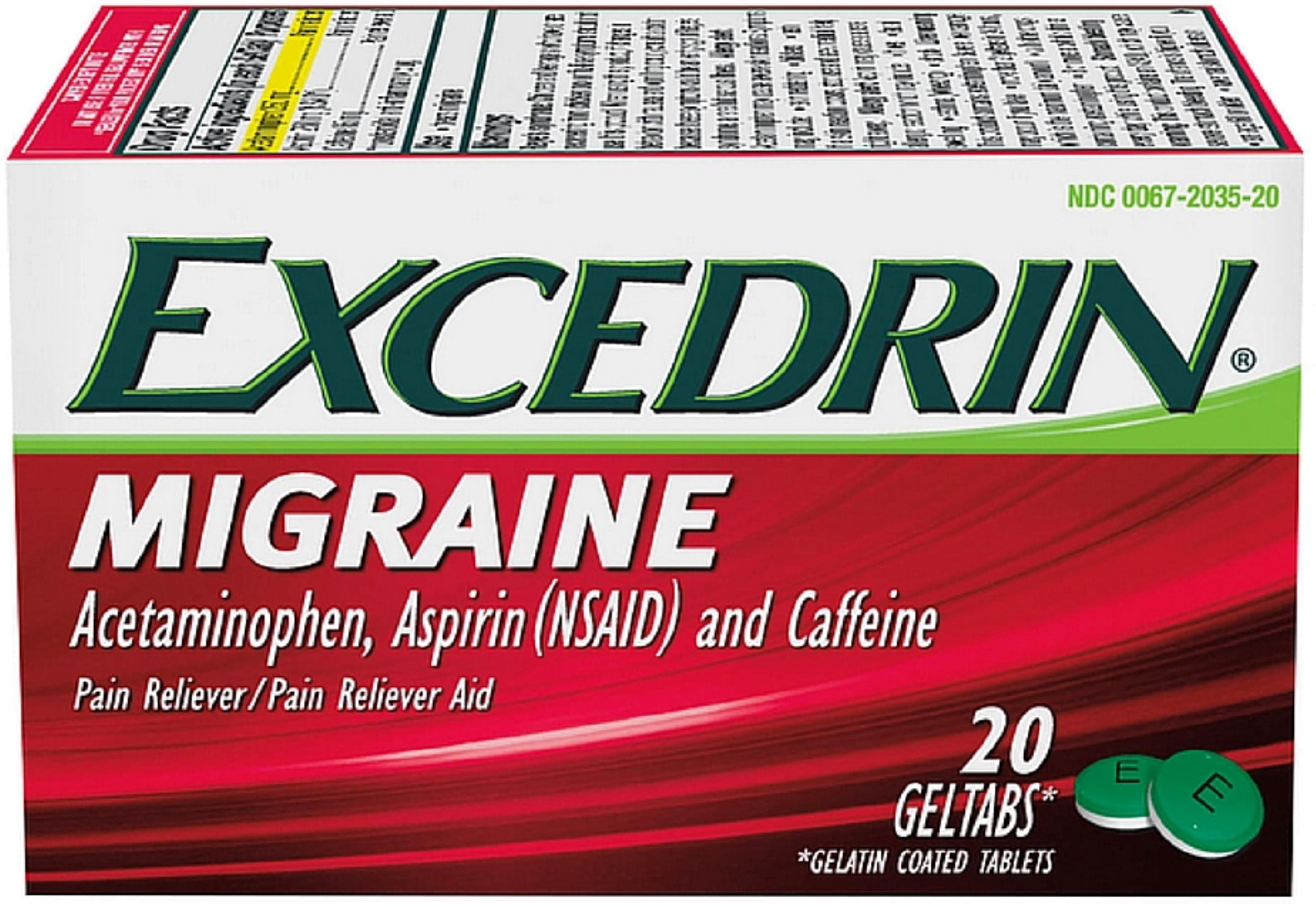

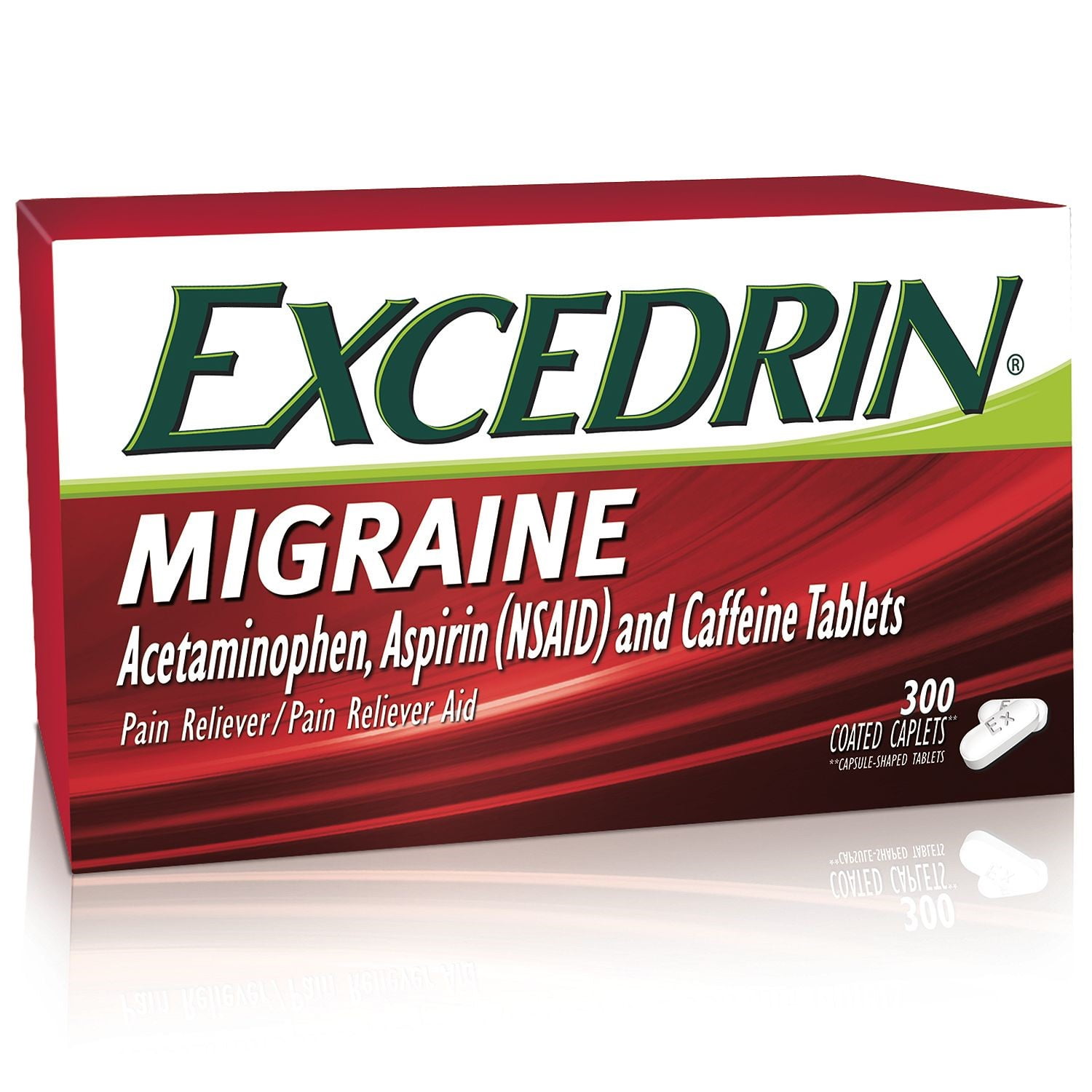
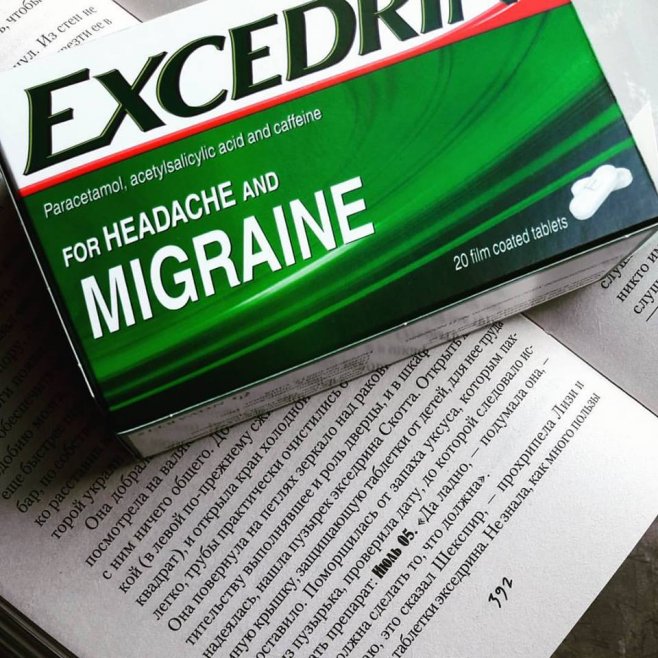 Excedrin.com. https://www.excedrin.com/products/migraine/
Excedrin.com. https://www.excedrin.com/products/migraine/
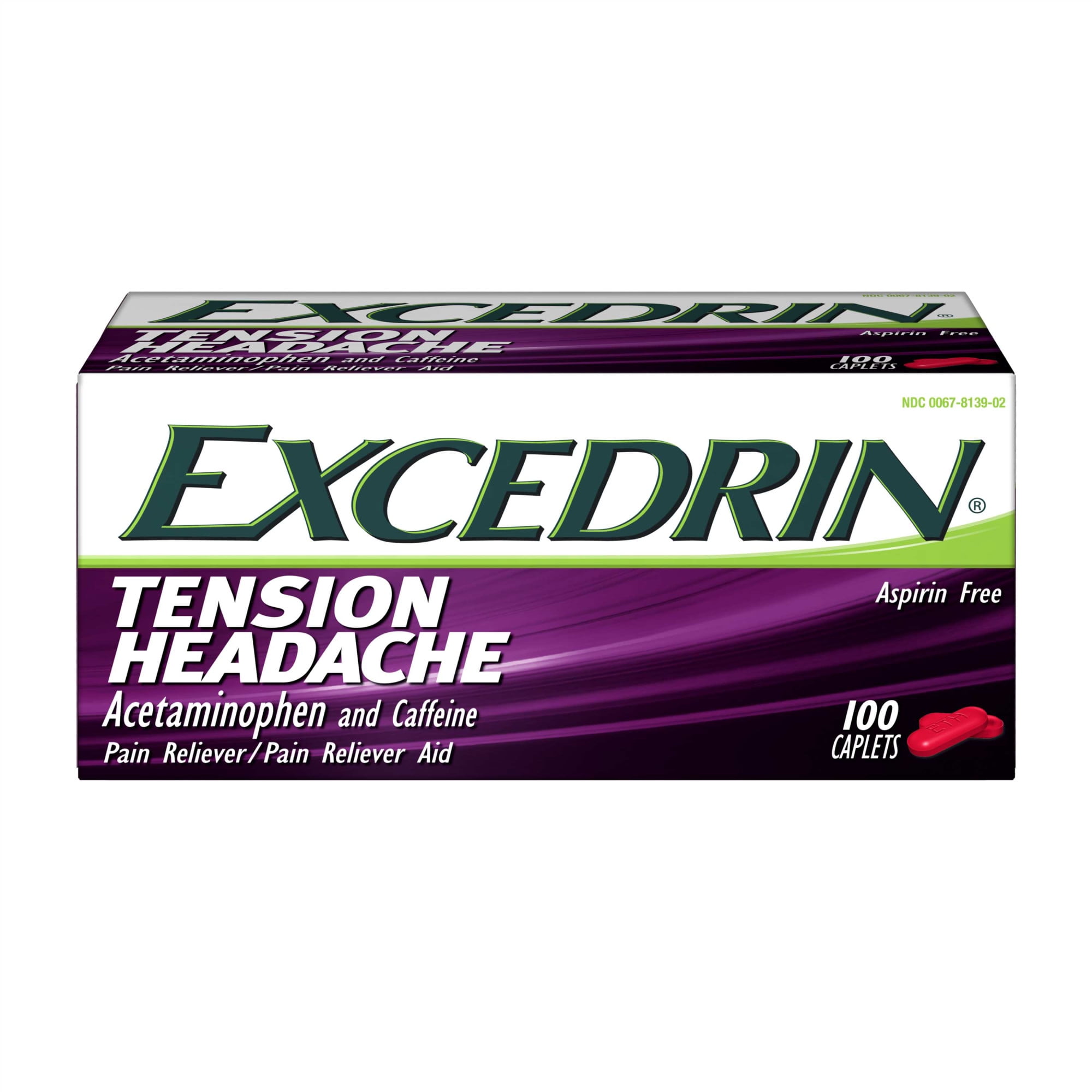 Accessed 10/12/19.WebMD. The Link Between Caffeine and Headac
Accessed 10/12/19.WebMD. The Link Between Caffeine and Headac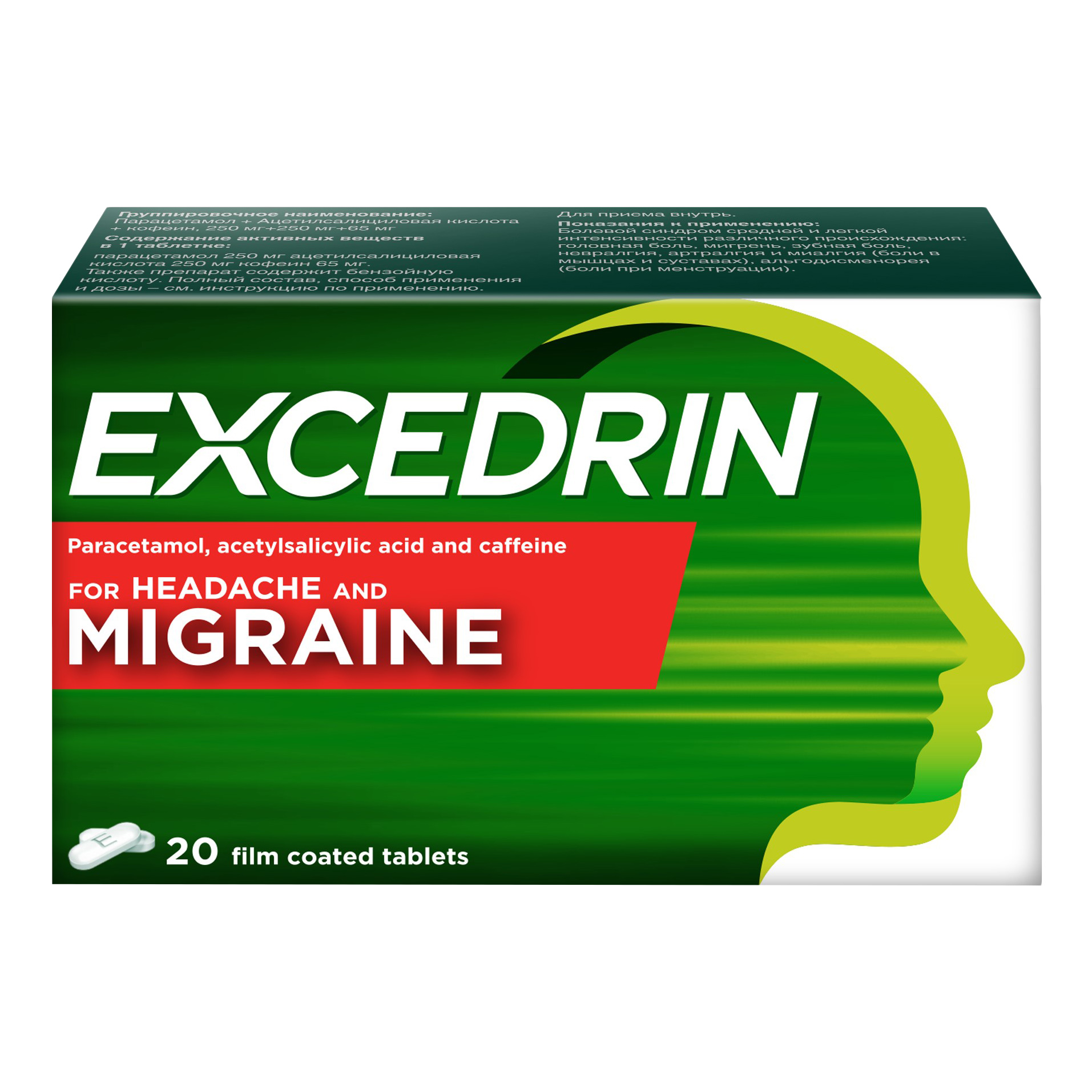
 It relieves not only headaches, but also toothache. Apply 1 tablet no more than 3 times a day.
It relieves not only headaches, but also toothache. Apply 1 tablet no more than 3 times a day.